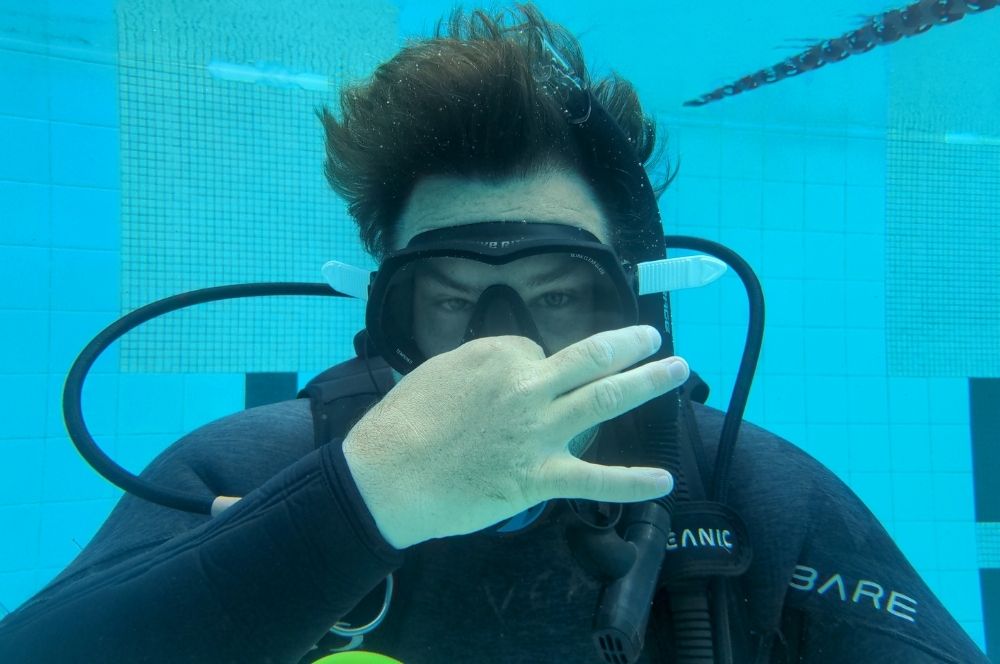You have 0 product(s) in your cart.
Abyss Scuba Diving
What To Do If You Have Equalizing Problems While Scuba Diving?

Difficulty Equalizing Ears When Diving: What to Do?
Difficulty equalizing while scuba diving? Equalizing is the process of adjusting to the pressure of the water around you. It is important to equalize the pressure in the outer ear to prevent discomfort and barotrauma. When your scuba dive, you need to equalize your ears to avoid pain and damage and to ensure that you have an enjoyable time on your dive. Here are some tips for how to solve your equalizing problems.
Begin Early to Equalize
One hour before your dive, begin popping your ears every fifteen minutes. Chewing gum seems to help some people because it makes you swallow more often. The eustachian tubes are normally closed and need to be opened early to allow air flow from the throat to the ears, preventing barotrauma and ear damage. Prior to you boarding the boat, make sure that when you swallow, stretch your jaw, or gently pinch and blow you hear a “pop” in both ears. This tells you both eustachian tubes are opening.
Stay Ahead of the Pain by Equalizing Ear Pressure
Just before you begin your ascent, ensure to equalize, then continue to equalize early and often. Not equalizing early can create a pressure differential that forces the soft tissues together, closing the ends of the eustachian tubes and making equalizing more difficult. Using your throat muscles to open the eustachian tubes can make equalizing more effective, especially when the valves are locked shut. Don’t wait until you feel significant pressure, discomfort, or any pain. If you delay until you feel some pain, then you will tense up and this will make equalizing even more difficult.
Descend Feet First
For many divers, equalizing their ears in a feet-up position requires more force and is more challenging than equalizing in the feet-down position. One effective technique to help equalize ear pressure while descending is the Valsalva maneuver. Another method involves pushing the jaw forward and tensing the throat muscles to help equalize the eustachian tubes. Tilt your head up slightly while keeping your neck extended, which helps open your eustachian tubes.
Use a Descent Line
Following an anchor line helps control your descent rate, which helps if ears do not equalize in a timely manner. Controlling the descent rate helps manage air pressure in the ears, preventing discomfort and potential injury. A line also helps you stop your descent quickly if you feel any pain.
If it Hurts, then Stop to Avoid Middle Ear Squeeze
If you’re already feeling pain, stop and try to equalize, then ascend a few feet and try again. If you still can’t equalise, end the dive. Continuing to descend with unequalised ears is painful and will lead to middle ear squeeze (blood and fluid forced into the middle ear) and/or eardrum rupture. Excessive force during equalization can also cause barotrauma and potentially rupture the round and oval windows of the inner ear. Never continue descending with unequalised ears and be sure to signal your buddy.
Avoid Things that Produce Mucus
Saltwater in your mask can make you a bit snotty, so keeping your mask clear helps minimise equalising issues. Some foods, including milk, can increase your mucus production, resulting in congestion and equalisation problems. Similarly, both tobacco smoke and alcohol irritate, both of which can increase mucus production.
Recent Posts





